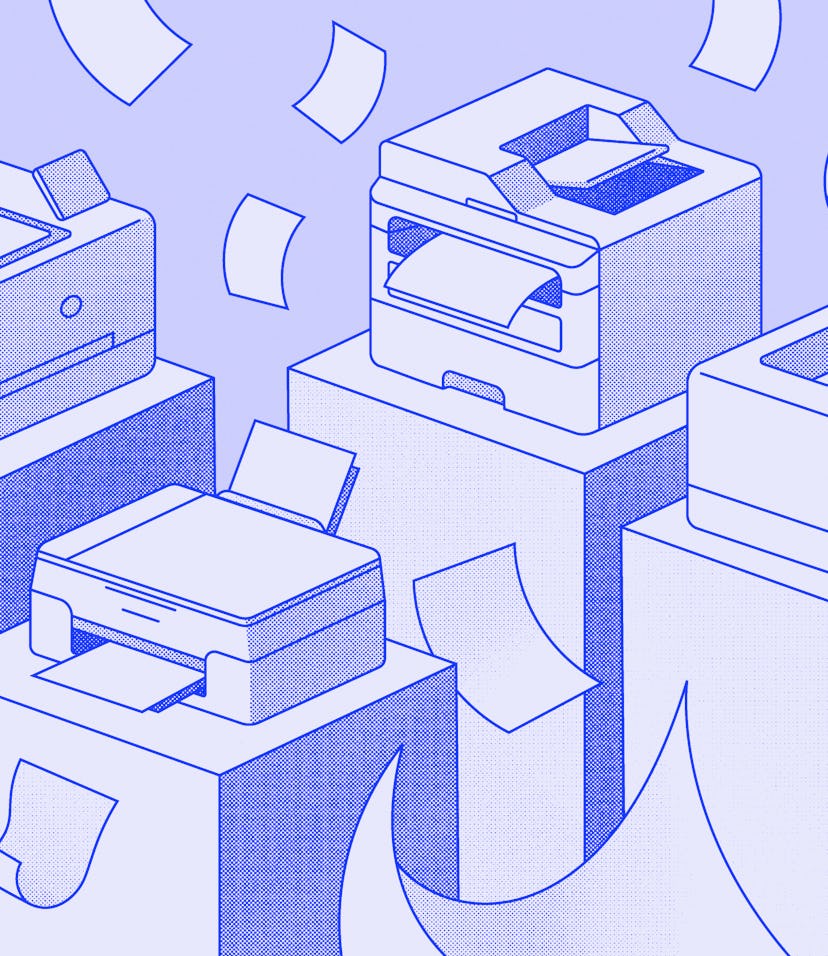Guides
Students: Here’s how to find a great printer
Most of the time you probably don't need one — but when you do, you'll want it to be quality.

For many people, a home printer just isn’t necessary most of the time; but with school back in session for many, and remote education no longer just a passing trend, having a printer at home is less optional than ever. It’s much easier to plug into the living room printer than run around town trying to find one before that assignment you procrastinated on is due.
But the home printer market is saturated with cheap hardware that’ll cost you a small fortune in ink replacements. Unless you’re working with an unlimited budget, buying a new printer that doesn’t suck can be frustrating. And don’t even bother picking a random inexpensive option from Staples. You’ll end up emptying your wallet for $50 ink cartridges before the month is out.
So let’s take a dive into the messy world of home printers. You’ll thank us later.
It’s laser time
If you’ve taken the aforementioned choose-a-random-Staples-printer route before, you’re probably most familiar with inkjet printers. Inkjet printers are probably the most common household printer. They work by mixing ink from cartridges and spraying them onto pieces of moving paper.
Inkjet printing technology is perfectly fine. It’s been around for a long time and gets the job done. Most of the time. Buying an inkjet printer (especially a low-tier option) is risky in terms of the general quality of prints you’ll end up with.
The industry that’s built up around inkjets is also pretty toxic. Many home inkjet printers lure customers in with inexpensive hardware — only for them to later find out that ink replacement cartridges are just as expensive as the printer itself. A regular ink cartridge can print around 200 pages before it runs out; that’s $50 or so every time you print 200 pages. It adds up and essentially negates the cheap hardware.
Then there are laser printers, which use a more complicated electrostatic process to create prints. The basic premise is that a laser beam passes back and forth across a drum; this drum then collects toner (powdered ink) and heats the image onto the page. This is the kind of technology used by Xeroxes and other big photocopiers.
Laser printer hardware has a higher starting price than inkjet counterparts, and replacement toner is generally more expensive than ink cartridges, too. The prices can be daunting for the uninitiated; why buy a more expensive printer that also requires expensive purchases in the future? The math isn’t quite so simple — a single toner cartridge can print thousands of pages. Your purchase ends up going much further when buying toner cartridges. The cost per page is typically way lower.
The print quality from laser printers — even less expensive laser printers — can sometimes be much better than what you can get from a low-end inkjet printer. They’re also much quicker and more efficient than inkjet printers. So yes, you’ll probably pay more upfront, but the value of that investment is well worth the price tag. You can always save some cash on toner by going for a black-and-white-only option.
There is an exception to this general wisdom, and that’s the Canon Megatank printer we have listed below. Canon actually has a whole series of Megatank printers, and all of these have refillable ink chambers that you refill with bottles rather than ink cartridges. Not only can you print tons of regular documents with it, but these printers will also spit out hundreds of photo prints per bottle.
Choose your perks
I know what you’re thinking. It can’t be as simple as choosing between laser and inkjet. Well, you’d be right. It’s not! There are about a thousand models that fall into each category. So how can you ever decide which will actually give you the most value for the money you shell out for it?
The best thing to do is to take some time to decide which extras are most important to you. Home printers are big on bells and whistles. Most of the time you’re not just buying a printer; you’re also buying a scanner and copier, too. You can also buy printers with Wi-Fi connectivity, duplex capabilities, and a variety of apps that add functionalities like email and smartphone connectivity. (Editor’s note: Duplex scanning is a lifesaver, definitely think about it.)
Which of those features are important to you is up to personal preference and needs. What I will say is that, in choosing a printer, it’s generally a good idea to put printing quality over those extras — it’s always better to go with the laser printer that doesn’t include Wi-Fi over an all-in-one inkjet that lets you print from across the room.
Show me the printers
Oh, you wanted actual recommendations?
If you’re only printing black and white and want a scanner, too:
If you’re printing in color:
If you have $100 and want something to last:
If you’ll mostly be printing photos:
If you have $50 and only print something twice a year:
Check out your local library or Staples. Seriously, any printer you can buy new for $50 isn’t worth the trouble it’ll inevitably print into your home.